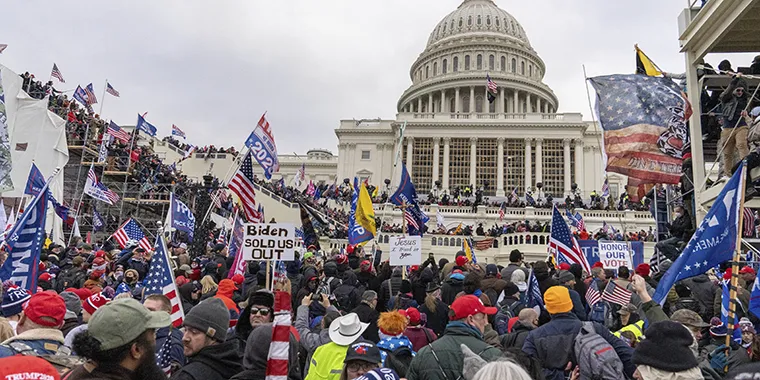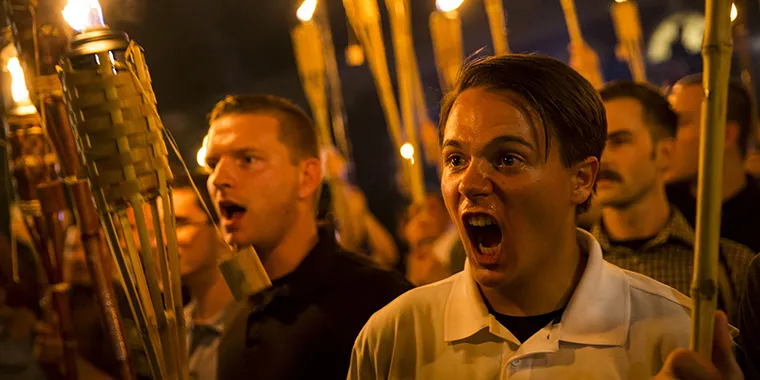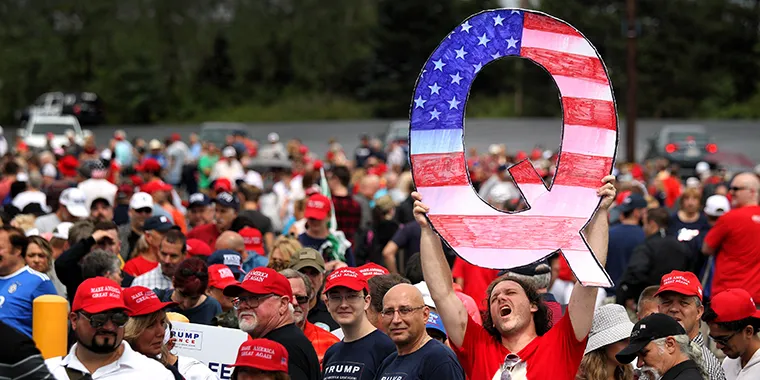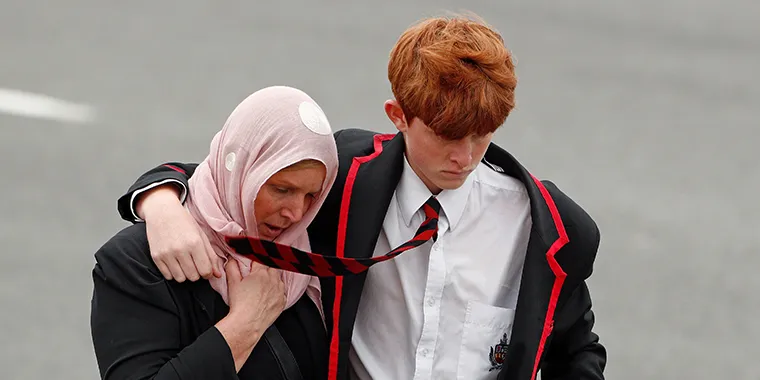Radicalization and Right-Wing Extremism
Learn how QAnon, white supremacists, and Silicon Valley have contributed to an evolving domestic terror threat.
Following the catastrophic terrorist attacks of September 11, 2001, the United States launched its war on terror—a sprawling, decades-long campaign to combat violent extremism around the world.
In the past twenty years, the U.S. government has spent trillions of dollars waging two wars in Afghanistan and Iraq, fighting the self-proclaimed Islamic State in Iraq and Syria, and hunting down foreign terrorist organizations in Somalia, Yemen, and several other countries, predominantly in Muslim-majority countries.
However, amid a recent surge in domestic terrorist attacks from groups such as white supremacists and neo-Nazis, U.S. counterterrorism operations have begun to turn inward, focusing on the rising threat of homegrown, right-wing extremism.
“There’s never been a more dangerous time in the twenty years since 9/11,” says Farah Pandith, an adjunct senior fellow at the Council on Foreign Relations, former diplomat, and pioneer in the field of countering violent extremism. She sat down with Caroline Netchvolodoff, CFR’s vice president of education, for a conversation about the most pressing security threats facing the United States, the rise of right-wing violence, and the ways the U.S. government and Silicon Valley can better combat extremism.
Risk of Radicalization: Interview
This interview was conducted in June 2021 and has been condensed and edited.
Caroline Netchvolodoff: How does the threat of terrorism facing the United States today compare to other points in recent history?
Farah Pandith: There’s never been a more dangerous time in the twenty years since 9/11. Far more people today are at risk of radicalization.
CN: How so?
FP: With al-Qaeda and the self-proclaimed Islamic State, you primarily had young people who were being recruited. Mind you, these groups have not gone away; they’re still out there.
But now we’ve had an explosion of white supremacists, neo-Nazis, and other extremist groups, which began to blossom during the Trump administration. We saw what happened with the attack on the Capitol on January 6. These groups don’t just sweep up young people. They attract retirees and veterans to their ideologies in addition to millennials, Gen Z, and Gen Alpha.
What is causing domestic threats?
CN: Why do you think we’re seeing a surge in threats from white supremacists and similar groups now?
FP: It’s a combination of things. Identity and belonging are at the core of these ideologies. There’s also the politicization of what a true American is and how to properly understand American history.
We have hundreds of militia groups in the United States, but it was never the kind of threat that we’re seeing today. Before, they didn’t necessarily feel they had the capacity to do what they wanted to. Now, they have the money, they are much more organized, and they feel like they have supporters out there.
We’re set up for a dangerous decade ahead. I agree with the Department of Homeland Security that violent white supremacy is the greatest domestic terror threat facing the United States.
CN: Do you think the United States was prepared to handle this threat?
FP: No. As the 9/11 commission stated, our biggest failure twenty years ago was the failure of imagination.
Now look at QAnon. The Department of Homeland Security has had intelligence for a really long time on this conspiracy theory. And what did the Trump administration do? They said it was so far-fetched that it could never be a threat. That should not be the response.
QAnon talks about a satanic cult of blood-drinking madness, and we think that no one is going to buy it. But guess what? Now, [nearly] one in five people believes in QAnon. And just like after 9/11, we’re wringing our hands and saying, “How can it be?”
How can governments combat domestic extremism?
CN: Now that this threat is more visible and better understood, does the United States have the necessary laws in place to crack down on this form of domestic extremism?
FP: I don’t think so. We never imagined we would need the type of federal laws that are used against foreign terrorist organizations or have to use similar counterterrorism strategies, like tracking and disrupting funding. But I think the Biden administration understands this and is trying to figure out what to do.
Also, the U.S. government has not held Silicon Valley accountable—mostly because it did not imagine two things. One, the government failed to realize that Silicon Valley would not do things for the common good. We were behind the eight ball there, and so we lack adequate laws around things like hate speech. Two, when the government realized algorithms were doing harm, it did not slap them down with rules and regulations.
The government and society have to align in terms of what we find acceptable, just as we do around pornography and child trafficking.
CN: What else should the U.S. government be doing to combat such radicalization?
FP: With ISIS, we saw how millennial recruiters drew in other millennials. What we ought to be doing with white supremacists is similarly understanding all the signals we see online and offline, which can come from old-school stuff like radio and new-school stuff like TikTok. We have to look at what people eat, what they wear, what they listen to, and who they’re hanging out with. This type of cultural intelligence can serve as a predictor.
During our last conversation, I noted that the answers to stop recruiting are both available and affordable. We know we need to scale up authentic, credible voices at the local level. And so, whether it’s a graffiti artist, a hip-hop artist, or an athlete, these young people can connect with them. This isn’t just a problem that governments have to solve. This is a problem that every citizen in the world needs to get engaged in: It’s politicians. It’s journalists. It’s businesspeople. It’s philanthropists. It’s regular citizens. It’s teachers. It’s peer groups.
What’s the difference between domestic extremists and foreign terrorist groups?
CN: We've heard the term “lone wolf” used to describe terror attacks in the United States. Do you feel like that is a fair characterization?
FP: I’ve never liked the term lone wolf. Nobody wakes up and just has the idea to shoot up a synagogue. They learned it. They sucked in the air of hate, and they saw it done elsewhere—like in Christchurch, New Zealand.
So an extremist may not have allegiance to a nonstate actor, but it’s connected. It’s inspired by and is part of a larger movement.
CN: Do you think far-right extremists in the United States influence foreign terrorist groups, and vice versa?
FP: Yes. We already know that groups like the Islamic State and al-Qaeda espouse a narrative around the United States hating Islam. So if white supremacist violence results in bad things happening to Muslims at a higher pace in our country or in Europe, those groups will say they were right.
There is also a danger to these groups learning from each other. The white supremacists have already used the Islamic State as a playbook—even though their ideologies are totally different. The Islamic State was super successful. They knew how to do this. So why wouldn’t white supremacists replicate their tactics?






